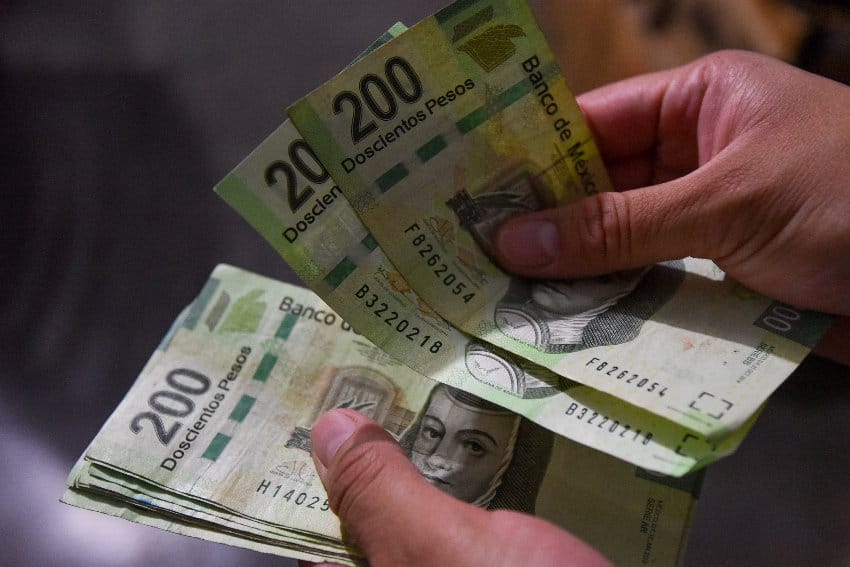Four days after appreciating to its strongest level against the US dollar in almost nine years, the Mexican peso declined sharply on Friday morning before making up some of the ground it lost.
Bloomberg data shows that the peso’s exchange rate weakened to as low as 16.74 on Friday morning before slightly recovering to trade at 16.66 at midday Mexico City time.

The weaker position represented a 1.8% decline for the peso compared to its closing position of 16.44 to the dollar on Thursday, and a 2.6% tumble compared to the 16.30 level it reached on Monday.
Gabriela Siller, director of economic analysis at Mexican bank Banco Base, said on the X social media platform that the peso was depreciating due to the “expectation” that the United States Federal Reserve won’t start cutting its key interest rate until November.
Data published earlier this week showed that inflation in the U.S. rose more than expected in March, reaching 3.5% from 3.2% in February.
Janneth Quiroz, director of analysis at the Monex financial group, noted on X that the peso was affected by a general strengthening of the U.S. dollar on Friday.
The DXY index, which measures the value of the greenback against a basket of foreign currencies, was up around 0.7% at midday.
Foreign exchange news website FX Street reported that the DXY index had hit its highest level since November earlier on Friday.
“The index’s upward movement is largely driven by rising U.S. yields and a hot inflation data environment that favors the U.S. dollar. In addition, Federal Reserve officials expressed fewer possibilities for rate cuts this year, and an increase in hawkish bets is another driver boosting the currency,” FX Street said.
The peso has benefited for an extended period from the vast difference between the official interest rate in Mexico — currently 11% — and that in the U.S., currently 5.25%-5.5%.
The Bank of Mexico (Banxico) made its first interest rate cut in more than three years in March, and is expected to deliver four more in 2024, according to Siller.
In another post on X, the Banco Base analyst said that the market at the start of the year expected the Fed to make three interest rate cuts in 2024.
“Now, two are expected,” Siller wrote, adding that “it wouldn’t be strange” if, in a few days, just one rate cut from the Fed comes to be expected, considering how much expectations have changed.
The differential between interest rates in Mexico and the U.S. declined by 25 basis points last month, and will narrow further if the Bank of Mexico (Banxico) makes additional cuts before the Fed makes an initial one. Such a scenario could lead to a weakening of the peso, although Banxico’s cut last month didn’t negatively impact the peso’s exchange rate.
There are a range of other factors benefiting the peso including strong incoming flows of remittances and an increase in foreign direct investment in Mexico as the nearshoring trend gathers strength.
Mexico News Daily
